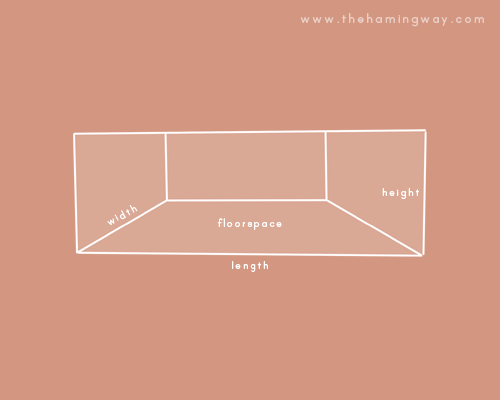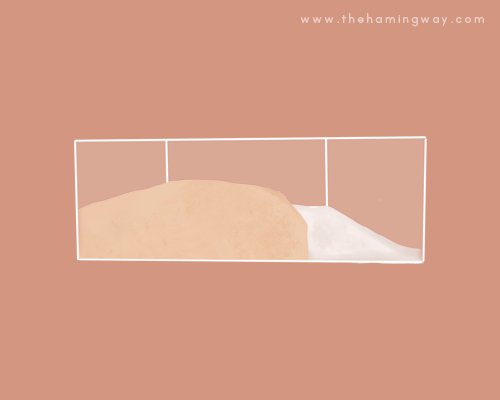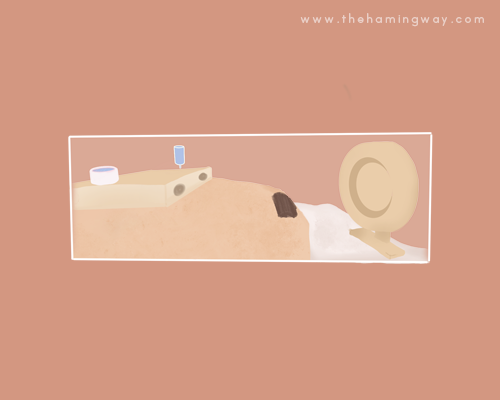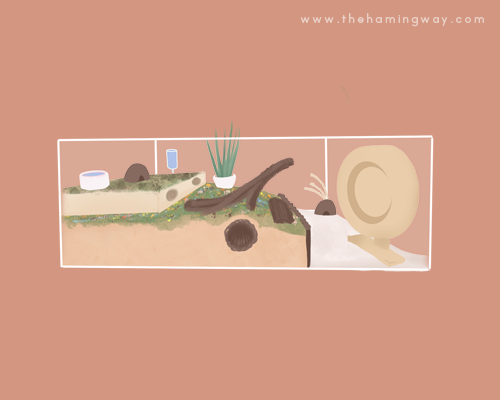A Basic Guide to Hamster Enclosures
This is going to be the first part of our series on enclosures. This is a condensed version of our enclosure post. More things will be discussed and covered in depth there. For all studies and scientific data, you can refer to our sources. You can also view this on our instagram.

Enclosure Sizes
In order for a hamster to probably be able to live, he needs a properly sized enclosure. A properly sized enclosure is one that meets and even exceeds the minimum enclosure requirement for a hamster. Your hamster is going to be spending most of their time in their enclosure, so it needs to be big enough to accommodate at least their basic needs.
Hamster cages should not provide more height than length or width as hamsters need floorspace more than height. Height is still important, as you need to be able to provide a good amount of bedding.
Enclosure Minimum Size
Syrians - 5000 sqcm (775 sqin), with an enclosure height of 60cm (~24in)
Winter Whites, Campbell Dwarves, Chinese Hamster - 4000 sqcm (620 sqin), with an enclosure height of 50cm (~20in)
Roborovskis - 4000 sqcm (620 sqin), with an enclosure height of 40cm (~16in)
To calculate the floorspace of your enclosure, multiply the length by the width. The height minimum is in place mostly to ensure that the bedding depth requirement is met.
Benefits of a Bigger Cage
• Less chances of sterotypies/boredom behaviors
• More substrate means more burrowing
• Hamsters can feel more relaxed
• Less need for cleaning
Drawbacks of a Smaller Cage
• Smaller cages induce chronic stress in hamsters
• Hamsters may become more lethargic
• Less space means more frequent cleaning (which can stress your hamster out)
• Deprives hamsters the opportunity to live more naturally

Substrate
Hamsters are natural burrowers. For your hamster to be able to burrow, you need to provide a deep amount of appropriate substrate. Deep bedding should make up at least ½ - ¾ of the enclosure. Dwarves will need around 20cm (~8”) of bedding and Syrians will need around 30cm (~12”) of bedding. You also will need safe sand for your hamster to bathe in.
Studies show that when hamsters were provided with a large floor space and deep bedding, boredom behaviors significantly decreased.

Enrichments
In order for your hamster to be entertained, they need enrichment. An enriched environment is one that allows the hamster to perform natural behaviors and allows them to be more active. Hamsters who have a more enriched environment often made more positive judgement decisions compared to hamsters who didn’t. Hamsters are happier when they have more things to do. However, the most basic enrichments are the ones listed below:
Must Have Enrichments
• Appropriately sized wheel
• Gnawing materials
• Multi-chamber house
• Sand bath
• Deep bedding
As these are the bare requirements for enrichment, we also recommend scatter-feeding to provide more enrichments for your hamster.

Protip: When working with heavier hides and objects, consider using stilts on a platform. Your hamster can then burrow with less risk of the object collapsing on top of them.

Go Beyond The Minimum
These are only the basics! We encourage you to go above and beyond and give your hamsters as much as you can. You can add herbs, multiple substrates, and other kinds of objects to provide more enrichment. The more space you have, the more things you can add.
Helpful links:
